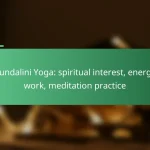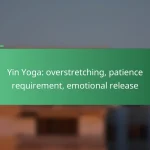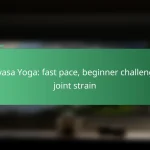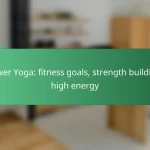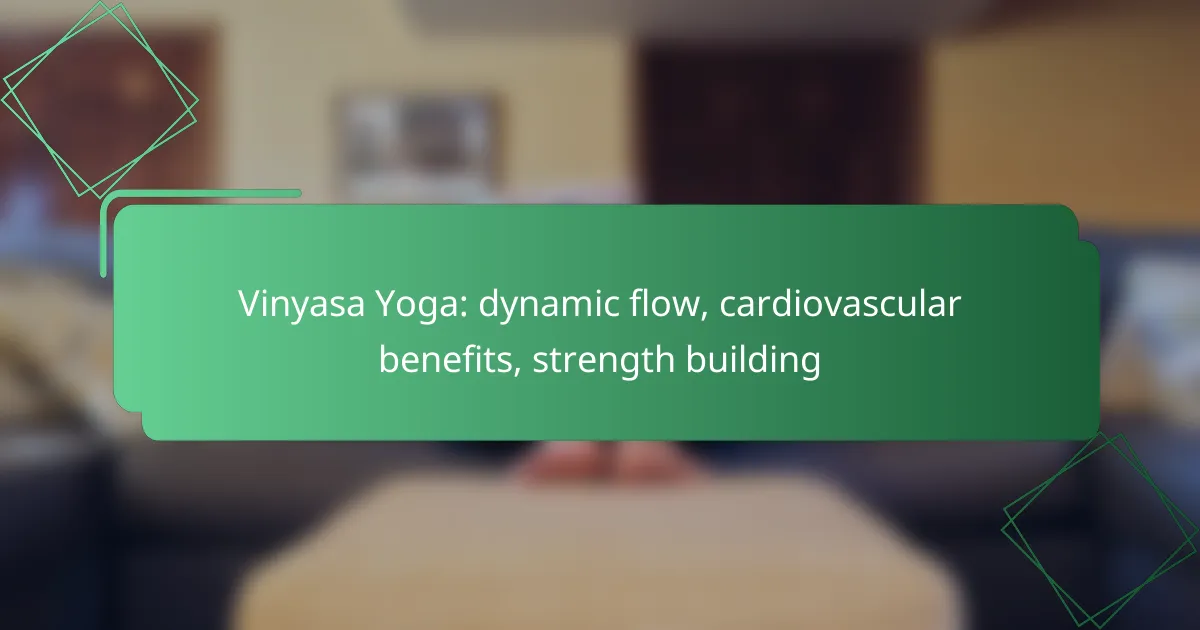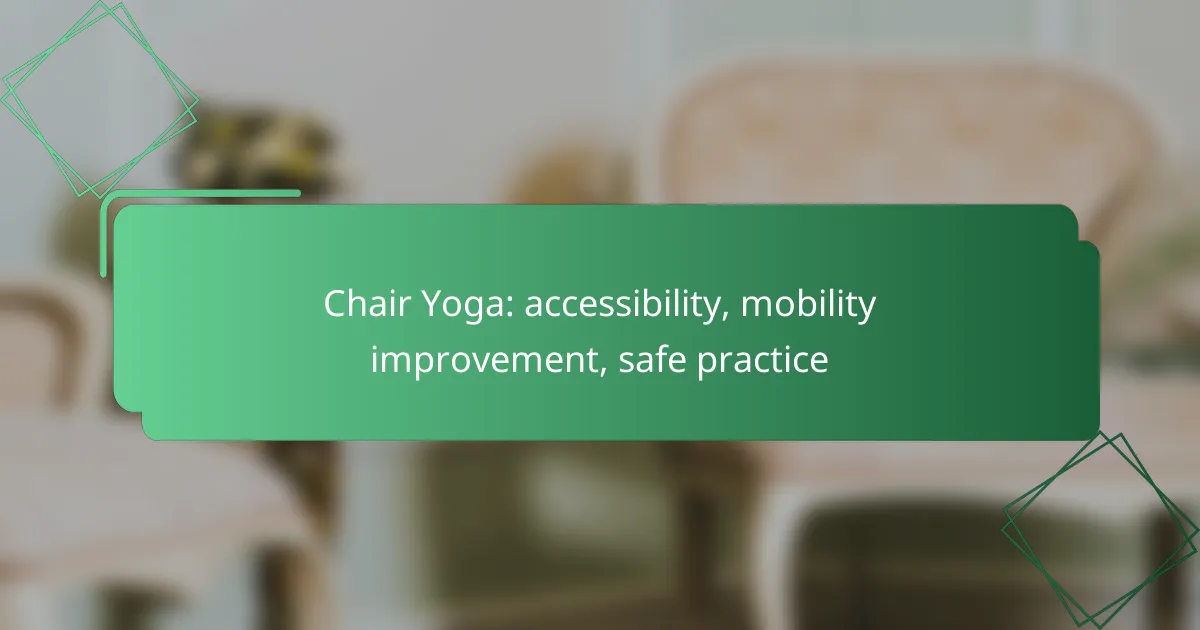Vinyasa Yoga is a dynamic practice that combines breath with movement, creating a fluid sequence of poses that elevates heart rate and enhances cardiovascular health. This engaging flow not only strengthens the heart and improves circulation but also builds muscle strength through the activation of multiple muscle groups, making it an effective workout for overall fitness.

How does Vinyasa Yoga improve cardiovascular health?
Vinyasa Yoga enhances cardiovascular health by promoting a dynamic flow of movement that elevates heart rate and improves overall circulation. This practice not only strengthens the heart but also supports lung function, contributing to better oxygen delivery throughout the body.
Increases heart rate
Vinyasa Yoga involves continuous movement between poses, which can significantly elevate the heart rate. As practitioners transition from one posture to another, the body engages in aerobic activity, often reaching moderate to vigorous intensity levels. This increased heart rate can improve cardiovascular endurance over time.
To maximize heart rate benefits, aim for sessions that last at least 30 minutes, incorporating a variety of poses that challenge your stamina. Regular practice can lead to improved heart efficiency and lower resting heart rates.
Enhances circulation
The flowing nature of Vinyasa Yoga promotes better blood circulation throughout the body. As you move through different poses, muscles contract and relax, which helps to pump blood more effectively. Enhanced circulation can lead to improved nutrient delivery and waste removal at the cellular level.
Incorporating poses that open the chest and hips, such as Upward-Facing Dog and Warrior II, can further stimulate blood flow. Practicing regularly can lead to noticeable improvements in energy levels and overall vitality.
Boosts lung capacity
Vinyasa Yoga encourages deep, rhythmic breathing, which can enhance lung capacity and efficiency. As practitioners synchronize their breath with movement, they learn to take fuller breaths, increasing oxygen intake and improving respiratory function.
To boost lung capacity, focus on pranayama techniques, such as Ujjayi breathing, during your practice. This not only supports cardiovascular health but also helps in managing stress and anxiety.
Reduces stress levels
Engaging in Vinyasa Yoga can significantly lower stress levels, which is beneficial for cardiovascular health. The combination of physical movement, breath control, and mindfulness helps to activate the body’s relaxation response, reducing cortisol levels.
To effectively manage stress through Vinyasa, incorporate restorative poses at the end of your practice, such as Child’s Pose or Savasana. This allows your body to recover and promotes mental clarity, further supporting heart health.
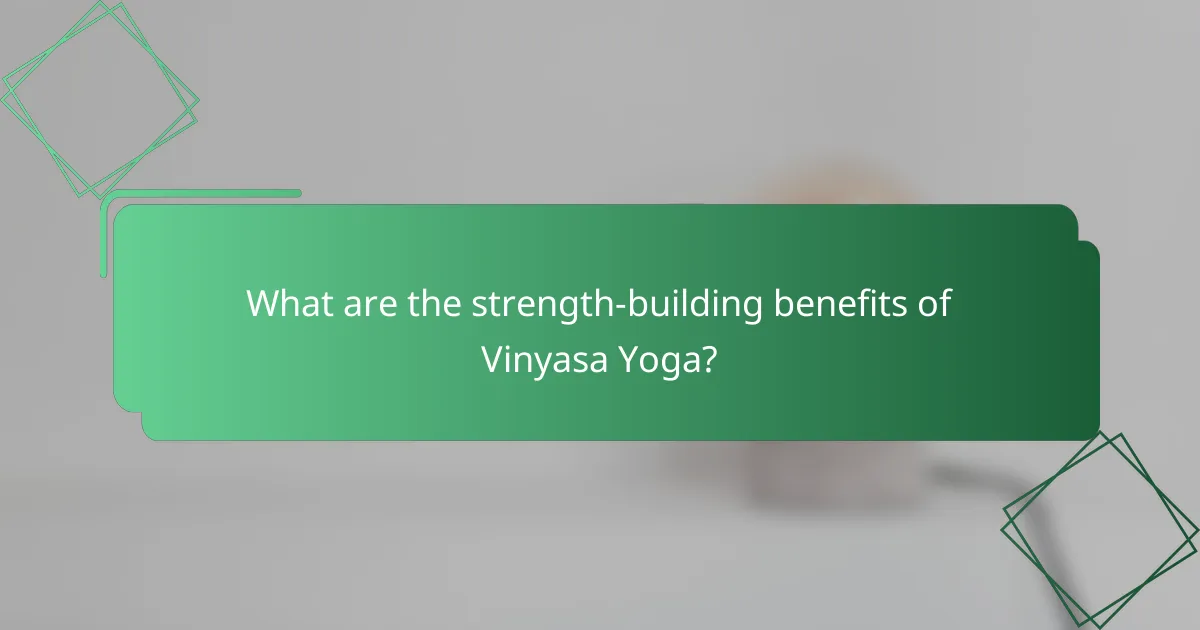
What are the strength-building benefits of Vinyasa Yoga?
Vinyasa Yoga offers significant strength-building benefits by engaging multiple muscle groups through dynamic movements and transitions. This practice not only enhances physical strength but also improves overall fitness levels, making it a popular choice for those seeking a comprehensive workout.
Develops core strength
Vinyasa Yoga emphasizes core engagement throughout various poses, which helps build a strong foundation for overall stability. Poses like Plank, Boat, and Downward Dog require abdominal activation, promoting strength in the core muscles. Practicing these poses regularly can lead to improved posture and reduced risk of injury.
To maximize core strength development, focus on maintaining proper alignment and breathing deeply during each pose. Aim for at least two to three sessions per week to notice significant improvements.
Improves muscle endurance
The continuous flow of Vinyasa Yoga encourages muscle endurance by requiring sustained effort during transitions and holds. This practice challenges the muscles to work longer without fatigue, which can enhance overall stamina. Poses that are held for several breaths, such as Warrior II or Chair Pose, are particularly effective for building endurance.
Incorporating longer holds and varied sequences can help increase muscle endurance. Consider practicing for 60 minutes or more to fully engage your muscles and build endurance over time.
Enhances flexibility
Vinyasa Yoga promotes flexibility through a series of dynamic stretches and poses that target various muscle groups. As you flow from one pose to another, your muscles warm up, allowing for deeper stretches and increased range of motion. Poses like Forward Fold and Pigeon are excellent for improving flexibility in the hips, hamstrings, and back.
To enhance flexibility effectively, incorporate a variety of poses that stretch different areas of the body. Practicing consistently, ideally three to four times a week, will yield the best results in flexibility over time.

What is the typical flow of a Vinyasa Yoga class?
A typical Vinyasa Yoga class features a dynamic flow that connects breath with movement, creating a seamless transition between poses. Classes often begin with Sun Salutations, followed by various asana sequences, and emphasize breath synchronization throughout the practice.
Sun Salutations
Sun Salutations, or Surya Namaskar, serve as a foundational element in Vinyasa Yoga, warming up the body and preparing it for deeper stretches. This series of poses is usually performed in a flowing manner, linking movements with breath to create a rhythmic experience.
Practitioners typically repeat the Sun Salutations several times, gradually increasing the pace to elevate heart rate and enhance cardiovascular benefits. Modifications can be made to accommodate different skill levels, ensuring accessibility for all participants.
Asana sequences
Asana sequences in Vinyasa Yoga vary widely, often tailored to the class theme or focus area, such as strength building or flexibility. These sequences are designed to flow smoothly from one pose to the next, which helps maintain an elevated heart rate and promotes endurance.
Common sequences may include a mix of standing poses, balancing poses, and seated stretches. Instructors often encourage students to listen to their bodies and adjust poses as needed, fostering a safe and effective practice.
Breath synchronization
Breath synchronization is a crucial aspect of Vinyasa Yoga, where each movement is coordinated with an inhale or exhale. This practice not only enhances physical performance but also cultivates mindfulness and presence during the session.
Instructors typically guide students to match their breath with their movements, creating a meditative flow that can reduce stress and improve overall well-being. Practicing breath synchronization can also help deepen the connection between mind and body, making each session more fulfilling.

How can beginners start practicing Vinyasa Yoga?
Beginners can start practicing Vinyasa Yoga by finding suitable classes and resources that cater to their skill level. This dynamic style of yoga emphasizes fluid movement and breath, making it accessible for newcomers with the right guidance.
Find local studios
Searching for local studios is a great first step for beginners. Look for yoga centers that offer Vinyasa classes specifically designed for newcomers. Many studios provide introductory offers or trial classes, allowing you to explore different instructors and styles without a significant financial commitment.
Check online reviews and community boards to find reputable studios in your area. Personal recommendations can also be valuable, as they often lead you to welcoming environments that foster learning.
Choose beginner classes
Selecting beginner classes is crucial for a positive experience. These classes typically focus on foundational poses and breathing techniques, helping you build confidence and understanding of Vinyasa flow. Look for classes labeled as “beginner” or “level 1” to ensure the pace and instruction match your needs.
Consider attending classes that emphasize alignment and modifications, as these will help you practice safely and effectively. Many studios offer a variety of times, so you can find a schedule that fits your lifestyle.
Use online resources
Online resources can supplement your Vinyasa Yoga practice, especially if you prefer to start at home. Numerous platforms offer free or subscription-based classes, tutorials, and guided sessions tailored for beginners. Websites and apps like YouTube, Alo Moves, or Yoga with Adriene provide a range of options to explore.
When using online resources, ensure you choose reputable instructors who emphasize safety and proper technique. This will help you avoid injuries and develop a strong foundation in Vinyasa Yoga.

What equipment is recommended for Vinyasa Yoga?
For Vinyasa Yoga, essential equipment includes a quality yoga mat, supportive blocks and straps, and comfortable clothing. These items enhance your practice by providing stability, support, and freedom of movement.
Yoga mat
A good yoga mat is crucial for Vinyasa Yoga as it provides grip and cushioning. Look for a mat that is at least 4-6 mm thick to ensure comfort during various poses and transitions. Mats made from natural rubber or high-quality PVC offer durability and stability.
Consider the texture and stickiness of the mat; a non-slip surface is ideal for dynamic flows. Regularly clean your mat to maintain hygiene and extend its lifespan.
Blocks and straps
Yoga blocks and straps are valuable tools for enhancing your Vinyasa practice. Blocks help in achieving proper alignment and can assist in poses that require additional height or support. Straps are useful for deepening stretches and improving flexibility.
When selecting blocks, choose lightweight foam or cork options for ease of use. Straps should be adjustable and made from durable materials to withstand regular practice.
Comfortable clothing
Wearing comfortable clothing is essential for unrestricted movement during Vinyasa Yoga. Opt for breathable, moisture-wicking fabrics that allow for flexibility and support. Fitted clothing can help you monitor your alignment, while loose-fitting options may provide added comfort.
Choose clothing that suits the temperature of your practice environment; lighter fabrics are preferable for warmer settings, while layering may be necessary in cooler spaces. Avoid overly baggy items that could hinder your movements or become a distraction.
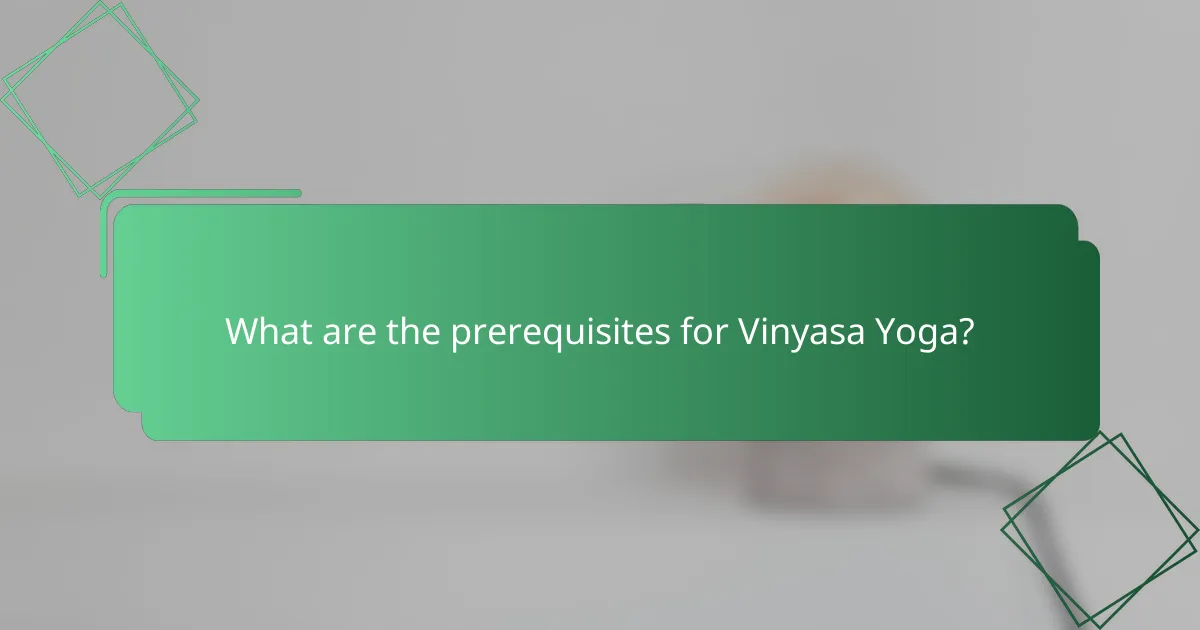
What are the prerequisites for Vinyasa Yoga?
Vinyasa Yoga has no strict prerequisites, making it accessible to individuals of all fitness levels. Beginners can easily join classes, as instructors typically provide modifications and guidance to accommodate various abilities.
No prior experience needed
Vinyasa Yoga is designed to welcome newcomers, meaning you don’t need any previous yoga experience to participate. Classes often start with foundational poses, allowing beginners to learn at their own pace while gradually building strength and flexibility.
Instructors usually offer variations for each pose, ensuring that everyone can find a suitable option that matches their current fitness level. This inclusivity helps foster a supportive environment where students can focus on their personal growth.
To get the most out of your first Vinyasa class, wear comfortable clothing and bring a yoga mat. Staying hydrated and arriving a few minutes early can also enhance your experience, allowing you to settle in and prepare for the flow of the session.

